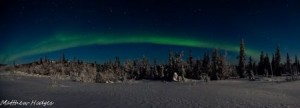- by Avery Shackelford

- Nadav Kander, Chongqing IV (Sunday Picnic) Series: Yangtze, The Long River, Chromogenic Colour Print 2006 Chongqing, China picture taken from: http://sites.asiasociety.org/coalandice/photographers/ , picture credit information taken from: http://www.prixpictet.com/2009/view/605/5211
An art exhibition open Sept. 24 – Nov. 28 at the renowned Three Shadows Photography Art Centre in Beijing features the works of 30 photographers hailing from across the globe including the United States, the United Kingdom, China, Norway, Russia, Italy, Canada, Malaysia and Germany.
These artists’ photographs tell a story from the base of the coalmine to the peaks of the Himalayas.
Photographs, including those taken by American photographer and filmmaker David Breashears, who co-directed the first IMAX film shot on Mount Everest, demonstrate how the use of coal emits greenhouse gases that are warming high-altitude climates like the Himalayas, where rapidly melting glaciers are affecting river currents, which in turn play havoc with the lives of downstream residents.
The photographs span an “arc” of phases showing how greenhouse gases resulting from coal use go up into the atmosphere causing the glaciers to melt, thus affecting the hydrologic cycle. The exhibition also includes time-lapse photos that show the changing landscape.
The goal of the exhibition is to promote environmental awareness as well as tell a beautiful, yet haunting visual story.
For more information, and to watch a behind the scenes video with commentary from the curators see the gallery’s Web site: http://sites.asiasociety.org/coalandice/






